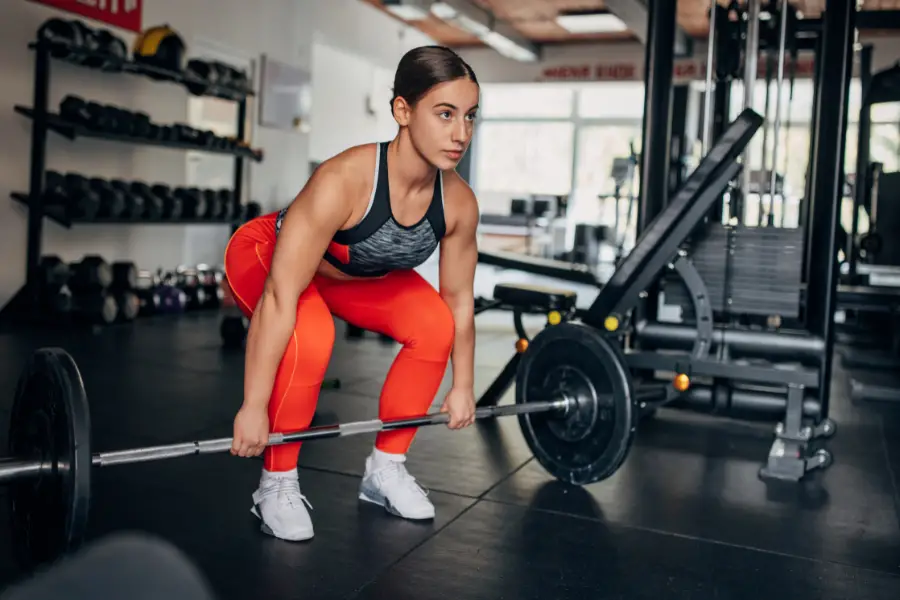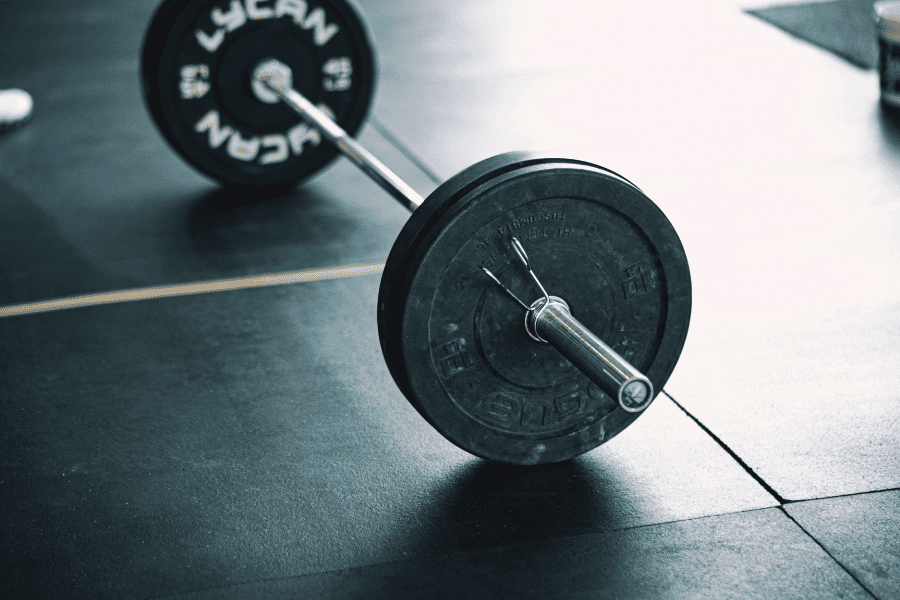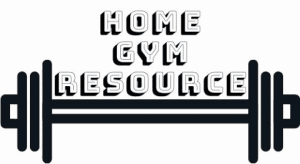Full-length barbells are quite long and don’t fit in many home gyms. Are there any shorter barbells that are still just as versatile as normal ones? There are quite a few and in this post, we’ll go over them and which length works best in general, for squatting, bench pressing, and more.
A 6′ barbell is the most versatile length bar that’s still more than a foot shorter than a full-sized Olympic one. The right 72″ bar fits on a rack and is usable for all barbell exercises. 5 foot barbells work if you’re not too tall and don’t want to rack the bar anywhere.
Below we’ll go into what sizes barbells exist, what you can use them for, and why 6′ bars are the shortest bar you want if you’re only going to buy one.
Contents
Which Lengths Barbells Are There?
Here are the common barbell lengths you can find. These are normal straight barbells and don’t include specialty bars like EZ curl bars, deadlift bars, etc.
| Barbell Type | Feet | Inches | Millimeters |
|---|---|---|---|
| Four Foot Barbell | 4 | 48 | 1219 |
| Five Foot Barbell | 5 | 60 | 1524 |
| Six Foot Barbell | 6 | 72 | 1828 |
| Seven Foot Barbell | 7 | 84 | 2133 |
| Women’s Olympic Barbell | 6.6 | 79.13 | 2010 |
| Men’s Olympic Barbell | 7.2 | 86.75 | 2200 |
The last two options are the women’s and men’s Olympic barbells. To be official Olympic barbells, the sizes have to be spot on. The sizes are set in millimeters which is why the feet and inches measurements look a little weird.
The official men’s Olympic barbell is 220cm (7’2) long. That’s the standard in many weightlifting competitions but also in many gyms that are focused on weightlifting. Usually, that type of gym will also have the women’s barbell as well since they’re better for people with small hands.
However, in many gyms that cater more to the general public, you’ll find barbells that are shorter since that saves money and space.
The x-foot barbells are not used in any official competitions which is why they don’t have very specific measurements. That’s also why the dimensions can sometimes be slightly different.
As said above, there are barbells with different lengths but those are specialty bars that are made for one specific purpose. Those are not the barbells you want for general Exercises.
Understanding Barbell Lengths
The total length is important to know so you can figure out if you can use a specific bar in the space you’ve got. However, there are two measurements of barbells that are very important to understand because they impact the usability and versatility of the bar.

The shaft length dictates how wide you can grip the bar and if it fits on certain racks or stands.
The sleeve length dictates how many weight plates you can fit on the bar.
The shorter a bar gets, the shorter the shaft and the sleeves get. However, different models shorten the shaft and sleeves in different ratios. That means some bars are short but still have a longer shaft while other models have more sleeve length.
Since x-foot bars are not standardized, the shaft and sleeve length varies quite a bit between models.
When choosing a barbell, you need to pick one that you can put on the racks you want and you can grip widely enough. That means a certain shaft length.
What’s The Best Barbell For a Small Home Gym?

The best all-round barbell for small home gyms is a good 6′ long bar. The right 6′ bar fits on a power rack or squat stands and can thus be used for squats, bench pressing, overhead pressing, and all other barbell exercises.
It’s important to pick the right 72″ bar though since not all fit on a rack. Read this post for more information.
At the same time, they’re also perfectly usable for all other exercises without getting overly long. A 6′ barbell is only really long for barbell curls although you can still make them work.
The load capacity of 6′ barbells is generally more than enough for the majority of lifters. If lift less than 500 lbs. on any lift, the sleeves of a 72″ bar are perfectly capable.
That means you can do all barbell exercises you can imagine with a 6′ barbell while saving more than a foot of space over a full-sized Olympic barbell.
Picking the right barbell can be a bit confusing. Here is a guide that walks you through all the important factors in picking a barbell.
Which Length Barbell Do You Need?

What’s the best length barbell you can get? I’m assuming we’re talking about home gyms here. I’m also assuming you want to use the shortest bar viable to save space.
If you’ve got plenty of space, going for a full-sized men’s or women’s Olympic barbell has some benefits. On of the big benefits is that there is much more choice and generally the quality of the barbells is higher as well.
What Length Barbell Is Best In General?
If you want to get a single barbell that can do everything, get a 6 foot bar that fits on a power rack or squat stands. (Not all 6′ bars fit, find the right ones here.) That way you can do squats, deadlifts, overhead pressing, bench pressing, etc. all with a single bar. While a 6 foot bar might be a bit long for things like hip thrusts and especially curls, you can make it work.
The only drawback is that 72″ barbells have a somewhat limited load capacity of usually about 500 lbs. For most people this isn’t a problem but if it is for you, you’ll need a full sized Olympic bar.
A shorter than 6 foot barbell doesn’t work if it has to go on a rack. If you only do lifts from the floor and don’t use any rack, a shorter 5′ bar works in most situations. 4′ bars are too short as general purpose bars unless you’re under 5′ tall.
Which Length Barbell For Bench Pressing?
Most bench press racks are about 40″-42″ wide. That means you need a barbell that has a shaft length of at least 44″ but 46″+ would be better. If the shaft is too short it gets difficult to re-rack the bar if you’re not perfectly centered which is something you want to avoid.
Also, if you have a dedicated bench press setup, you probably bench press heavy or at least want to get there in the future. That means you’ll need a bar with sleeves that can hold some weight.
Most 5′ bars have a shaft length of about 36″ to 40″. That’s too short for most bench press racks. That means you’ll need at least a 6′ long barbell for bench press racks.
6-foot bars have a shaft length that can range from 44″ to 52″ so you’ll still need to pick the right one to make it fit on the bench rack but, the right one is perfect for bench pressing. Also carefully check the width of your rack.
You can find good 6′ barbells in this article.
Which Length Barbell For Hip Thrusts?
A 5 foot barbell is good for hip thrusting. This is long enough so you can easily fit under it and grab the bar a little wider than shoulder width. At the same time, it’s not so wide that it becomes unstable quickly. A 4′ barbell can work for hip thrusts if you’re a small person.
However, 48″ barbells often have quite short sleeves which means limited load capacity. If you’re hip thrusting heavy, a 5′ bar allows you to load more plates. For the vast majority of people, this won’t be a problem but it could become one in the future.
For example, a normal 4′ bar has about 6″ long sleeves. The barbell clip takes up about 2″ of that. Now you’ve got 4″ of sleeve left to load plates on. 45 pound plates usually are a bout 1.5″ thick. That means you could load at most 3 plates on each side.
6 x 45 lbs. = 270 lbs. That is plenty heavy enough for most people but if you know you can do more, a 5′ bar is better.
Which Length Barbell For Squats
For squats, you need a bar that fits on a rack or squat stands. That means at least a 6′ barbell is necessary. For most people, a 72″ bar works perfectly for squats and most other lifts. The only problem is that if the shaft is a little short (or your rack really wide), it can be more difficult to center the bar exactly right to re-rack it.
Doing some research on both the bar and rack before buying will help prevent a lot of mismatching.
However, if you like to squat or deadlift heavy (500 lbs+), a barbell with longer sleeves is necessary. Look at full-sized Olympic bars in that case.
Which Length Barbell For CrossFit?
Crossfit involves a lot of Olympic-style lifts combined with general fitness lifts. Especially on Olympic lifts, having the knurling in the right places is important. That’s why it’s recommended for most people to go with a men’s or women’s Olympic bar for CrossFit.
If the men’s or women’s is better for you mainly depends on hand size. Women’s bars are thinner (25mm) than men’s bars (28mm) which makes a big difference in feel and grip for different hand sizes.
Olympic bars are often also better suited to the lifting style with sleeves that spin better, the right knurling, and markings.
Which Length Barbell For Curls?
For doing bicep curls, a short 4′ bar is long enough. Most EZ curl bars are about 4′ long as well and that works perfectly for training your biceps. A 5′ bar is also perfectly usable for curls but longer than 6′ gets a bit unwieldy although it’s still possible to make curls work.
However, if you’re going to buy a barbell only for arm exercises, consider getting an EZ curl bar instead of a straight bar. Get a longer straight bar for other exercises. That way you have more variety and you can save your wrists.
Pros and Cons of Short Barbells
Pros of short barbells
Cons of short barbells
Want to know more about barbells in general? Here’s a guide that covers everything you want to know about barbells.
How Much Shaft Length Does a Barbell Need?
What can you do with the extra length of shaft (Except make immature jokes) of a full-sized bar versus a shorter bar?
Unless you’ve got very long arms, most people don’t actually need a shaft that’s longer than about 48” That’s the width of the vast majority of power racks. Have you ever gripped a barbell wider than that? I haven’t.
A longer shaft means you can put your hands in wider grip positions.
The only exercise where you might need a bit of extra shaft length is if you’ve got very long legs and you want to do sumo deadlifts. Sumo deadlifts require you to spread your legs really wide and it’s possible you hit the weights with your toes.
However, I’m 6’1 and have relatively long legs and have no problem doing sumo deadlifts with a 6’ barbell. Maybe I’m not flexible enough though…
How Much Sleeve Length Do You Need?
Extra sleeve length serves one purpose: the ability to put on more weight plates. Let’s do some math what the actual difference is.
Sleeve lengths;
- Full length= 16.25
- 6’ bar = 11.5” (Average, not standardized)
- 5’ bar = 10” (Average, not standardized)
Of course, not every weight plate is the same thickness. Even looking at 45 lbs. plates there is quite a lot of difference.
Rogue Olympic steel plates are 1.3” thick. Bumper plates can be a bit thicker than that at 2.37” while competition plates are only 0.87” thick. So there are wide differences in how thick 45 lbs. plates are.
The Rep Fitness bumper plates I recommended here for home gym use, are 2.83” inch thick. You can certainly get thinner ones but that’s only necessary if you really run out of sleeve length. Let’s see how many of those you can fit on these bars.
How many Rep Fitness 45lbs. plates fit on the barbells?
- 16.25/2.83= 5.74 = 5 plates
- 11.5/2.83= 4.06 = 4 plates
- 10/2.83= 3.53 = 3 plates
And you’ll still have some space left over for some bar clips to prevent the plates from falling off.
How much weight is that?
- 5 plates = 5*45*2 = 450 lbs. for both sides
- 4 plates = 4*45*2 = 360 lbs. for both sides
- 3 plates = 3*45*2 = 270 lbs. for both sides
That’s excluding the weight of the barbell itself. For the vast majority of people the 360 lbs. load capacity of a 6’ barbell is plenty. And if it isn’t, you can get plates that are less than half the width of these Rep Fitness ones. That would double your load capacity.
Need a full length barbell? Check out my favorite barbell here.
Favorite Barbell Accessories
Your barbell workouts will be made better by these accessories:
- Barbell collars: Keep the plates securely in place with these barbell collars (Amazon link)
- Micro plates: This set of micro plates (Amazon link) allows you to add small amounts of weight to the bar so you can keep making progress.
- Squat pad: Need a little padding between your back and the barbell? This Profitness squat pad (Amazon) is both high quality and affordable.
- Deadlift pads: Dramatically reduce the noise and impact on the floor when deadlifting with these Yes4All pads (Amazon).
Find my favorite barbell and weight plates by clicking here.

